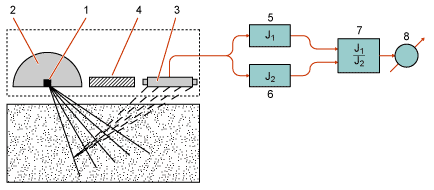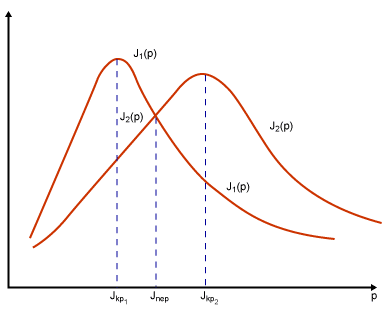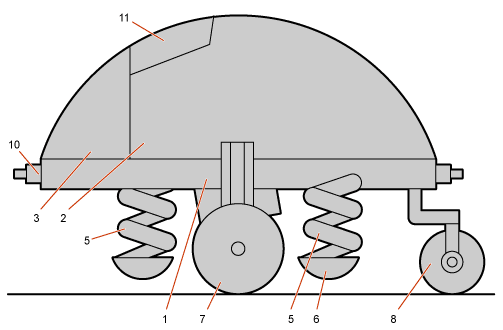By Abram Teplitskiy
After graduating with a degree in physics, the author was involved in nuclear physics, more specifically in the research and development of equipment for testing construction materials like soil, concrete, etc., and developing new testing technologies with nuclear methods – the focus of this Student Corner – that are applicable for use on the Earth's moon.
Measuring Soil on the Moon
The first problem the author worked on was how to measure a single valued density of soil. (Figure 1 and 2)
| Figure 1: Measuring Single Valued Density of Soil |
|  |
|
Soviet Union Patent #397,066 |
The source of the radiation (1) is located in the protective lead container (2) and the radiation stream is directed to the soil strata. The energy of gamma radiation interacts with the electrons of chemical elements of the Moon's soil, scattering the electrons. Part of the scattered electrons could reach the radiation sensor/detector, sometimes known as a Geiger Counter or Sensor. The amount of scattered gamma energy depends on the density of the surrounding soil and the energy of the gamma radiation. Figure 2 shows the potential different energies of scattered gamma radiation.
Soviet Union Patent #397,066 |
Making a point on the coordinates of 0.2 and 2000 and look at their intersection and take a vertical line down to the x-axis. There are two possible values of densities in this point, or, more precisely, two possible densities of soil in this volume of soil. How to select the "real" value of density? This ambiguity led to the invention of a new method of measurement. The author of this article invented several methods how to eliminate such measurement ambiguity using nuclear methods for soil density measurements (Soviet Union Patents #364,883 (1970), #381,984 (1973), and #397,066 (1973).
Gamma Energies
| Figure 3: A Closer Look at Gamma Energies |
|  |
|
Soviet Union Patent #364,883 |
How can the measurement ambiguity shown in Figure 3 be resolved? Consider this situation similar to a case using Geiger Sensors, placed at two different distances from source of radiation. There will be two pairs of possible values of density of soil. Because the measurements are in a local area, the results of the measurements will be close to the actual measurement.
Transportation on the Moon
Russian Federation Patent # 2,243,122 (Figure 4) is a transportation device for moving on the conditions of the Moon's surface and atmosphere – based on shape memory alloys. The machine includes a body, a cabin for a crew, sun batteries, engine, wheels, shock damper, and also includes maneuvering engines. The engine includes a directional tube that contains a pushing device; its end is made as a spiral (5), made from shape memory material. The shape memory material's transmitting point is higher than the temperature of the device. This higher temperature supplies the pushing device with an electrical impulse, which heats the spiral to the point of its straightening. That straightening allows the device to push itself along the soil. This type of shape memory effect provides the opportunity for this vehicle to move in the rare atmosphere of the Moon.
| Figure 4: Transportation on the Moon |
|  |
|
Russian Federation Patent # 2,243,122 |
Summary
Don't forget – lessons taught and learned on Earth are applicable beyond the stars.
Happy inventing!About the Author:
Abram Teplitskiy, Ph.D., is a consultant for inventing, applied physics and civil engineering. Contact Abram Teplitskiy at tepl (at) sbcglobal.net.
Copyright © 2006-2011
– RealInnovation.com, CTQ Media. All Rights Reserved
Reproduction Without Permission Is Strictly Prohibited –
Request Permission
Publish an Article: Do you have a innovation
tip, learning or case study?
Share it
with the largest community of Innovation
professionals, and be recognized by your peers.
It's a
great way to promote your expertise and/or build your resume.
Read more about submitting an article.